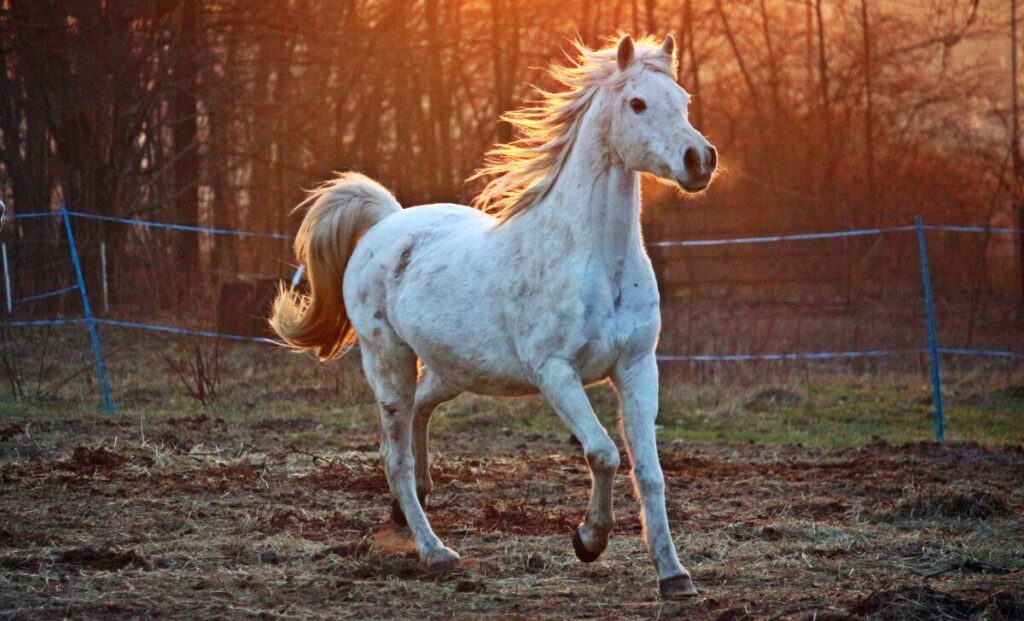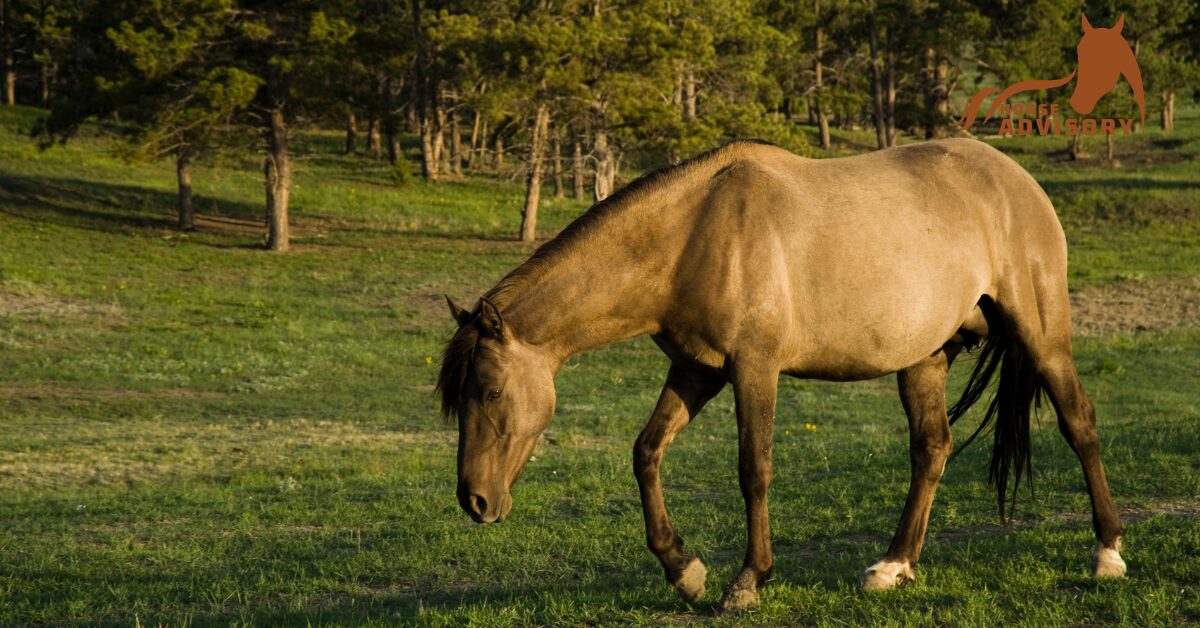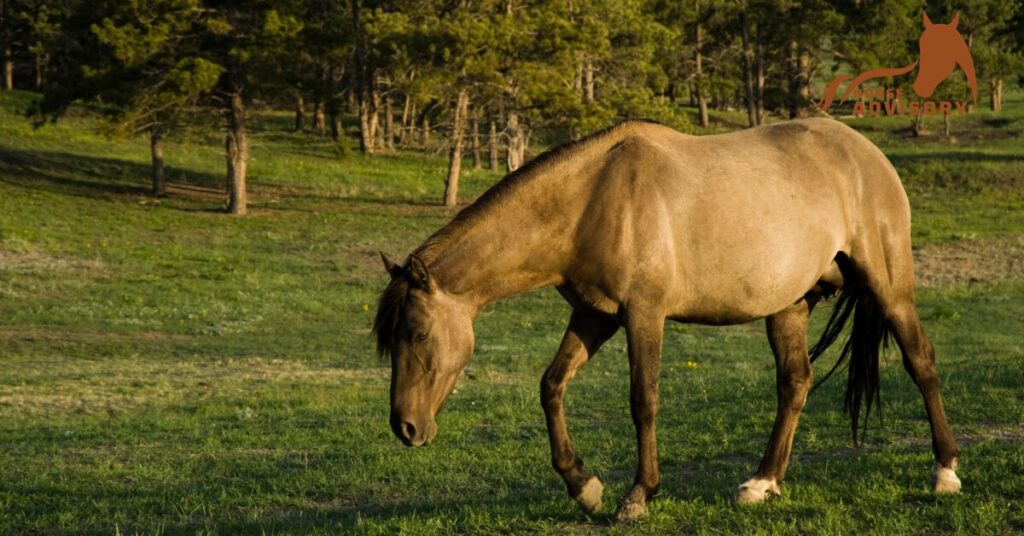The world of horse breeds is vast and diverse, with each breed boasting its unique characteristics and history. Some breeds, like the Arabian or the Thoroughbred, are well-known and celebrated. Others, while lesser-known, carry a deep and compelling history that deserves recognition. One such breed is the Sorraia. With a lineage dating back to prehistoric times, the Sorraia horse breed offers a fascinating glimpse into equine history.
Origins in the Wild
The Sorraia horse breed’s story begins thousands of years ago, on the Iberian Peninsula. This region, known for its diverse landscapes and climates, offered a challenging environment for any living creature. Yet, it was here, amidst the rugged mountains and vast plains, that the ancestors of the Sorraia horse thrived. These horses are believed to descend from the wild equines that roamed this area at the end of the last Ice Age, adapting to the harsh conditions and evolving into a breed that carries a unique genetic signature.
The Sorraia exhibits primitive features that link it directly to these ancient equines. Their distinctive grullo or dun coloring, zebra-like markings, and bi-colored manes and tails are tell-tale signs of their primitive roots. These features are thought to have provided excellent camouflage against predators, allowing them to blend seamlessly into their surroundings. This ability to camouflage would have been crucial to their survival, showcasing their adaptation to the harsh, rugged landscape of the Iberian Peninsula.
Further evidence of their ancient lineage comes from cave paintings found across Spain and Portugal, depicting horses with similar characteristics. These paintings, dating back to prehistoric times, offer a glimpse into the past, showing us the significant role these horses played in the lives of early humans. The Sorraia, therefore, is not only a relic of the past but also a testament to the enduring bond between humans and horses.
Discovery and Recognition
Fast forward to the early 20th century, a time when many ancient horse breeds were disappearing under the onslaught of modernization. It was during this period that Portuguese zoologist Dr. Ruy d’Andrade embarked on an exploration of Portugal’s remote Ribatejo province. D’Andrade, a passionate equine enthusiast, was on a quest to find and preserve indigenous Iberian horse breeds. On his journey, he stumbled upon a small herd of wild horses that caught his attention.
These horses, with their primitive features and distinctive coloring, reminded d’Andrade of the ancient horses depicted in prehistoric cave paintings. Recognizing their potential significance, he understood that these horses were not just another breed but a relic of ancient Iberian horses. This realization led him to dedicate his efforts towards studying and preserving these unique equines.
In an effort to preserve what he realized was a dwindling breed, d’Andrade began a breeding program on his estate. He gathered the best specimens he could find and started a careful breeding program aimed at preserving their unique traits. He named the breed “Sorraia,” after the Sor and Raia rivers near where he first discovered them. Through his efforts, d’Andrade ensured that the Sorraia horse, a living link to our past, would continue to survive into the future.
Near Extinction and Conservation Efforts
Despite d’Andrade’s preservation efforts, the Sorraia breed faced a significant decline throughout the 20th century. By the 1970s, they were on the brink of extinction, with only a few dozen horses remaining. This decline was primarily due to habitat loss, crossbreeding with modern breeds, and a lack of recognition and support for their preservation.
Recognizing the urgency of the situation, several organizations and individuals stepped up to save the breed. Among them was Hardy Oelke, a German horse enthusiast who established a preservation breeding program in Germany. Thanks to these concerted conservation efforts, the Sorraia horse breed has made an impressive recovery, although it remains rare.
Genetics
The Sorraia breed’s rich genetic heritage is a fascinating tale of survival and adaptation. Originating from the wild horses that roamed the Iberian Peninsula thousands of years ago, these horses have managed to preserve their unique genetic traits through centuries of evolution and change.
Recent genetic studies have shed more light on the Sorraia’s intriguing ancestry. These studies have shown that the Sorraia shares a common ancestry with many modern Lusitano and Andalusian horses. This discovery has significant implications for understanding equine evolution and the development of various horse breeds. It underscores the Sorraia’s historical and genetic importance and highlights the need for continued efforts to preserve this unique breed.
The Sorraia’s primitive features and unique grullo or dun coloring are thought to be a direct result of their ancient lineage. These characteristics, which include a distinct dorsal stripe, zebra-like leg markings, and bi-colored manes and tails, are rarely seen in domesticated horse breeds. The preservation of these features in the Sorraia provides invaluable insights into the physical characteristics of prehistoric horses and helps scientists understand how these features have evolved over time.
Temperament
Beyond their genetics and physical attributes, Sorraias are also known for their distinctive temperament. Known for their resilience and intelligence, Sorraia horses embody the spirit of the wild horses they descend from. They possess a calm and gentle temperament, making them easy to handle and train. This temperament has made them a favorite among equestrians across the globe.
The Sorraia’s temperament is likely a result of their adaptation to challenging environments in the past. Their ancestors had to survive in the harsh conditions of the Iberian Peninsula, developing a hardy nature that has been passed down through generations. This hardiness contributes to their robust health and their ability to thrive in various conditions.
Despite their calm demeanor, Sorraias are also known for their spirited nature. They are alert and responsive, displaying a keen sense of awareness of their surroundings. This combination of calmness and alertness makes them versatile horses, suitable for various equestrian disciplines. Whether it’s dressage, endurance riding, or simply pleasure riding, the Sorraia’s temperament makes them a joy to work with.

Physical Characteristics
The physical characteristics of the Sorraia horse breed are a testament to their ancient lineage. Standing at about 13 to 15 hands high, they are relatively small compared to many modern horse breeds. However, despite their size, they are remarkably strong and hardy, with a well-built physique that speaks of their resilience and adaptability.
One of the distinguishing features of the Sorraia is their head. They have a convex or straight profile, with large expressive eyes that exude intelligence and alertness. Their ears are medium-sized and mobile, indicative of their keen sense of hearing. The body is well-proportioned with a deep chest, robust back, and strong, slender legs, all of which contribute to their agility and endurance.
The coat of the Sorraia is another distinctive feature. They sport a unique grullo or dun color, a shade that harks back to their wild ancestors. Further enhancing this unique coloring are zebra-like markings on their legs and bi-colored manes and tails, features that are rarely seen in other horse breeds. These striking physical characteristics make the Sorraia a truly unique breed, a living relic of our equine past.
Discipline
Sorraia horses are known for their versatility, a trait that makes them suitable for a wide range of equestrian activities. Their natural agility and endurance, coupled with their calm temperament, make them excellent candidates for dressage. They have the ability to learn complex movements with grace and precision, making them a joy to train and ride.
Endurance riding is another discipline where the Sorraia excels. Their hardy nature and robust health, inherited from their wild ancestors, equip them with the stamina required for long-distance rides. Driving is another activity where the Sorraia’s strength and stamina come into play. They are capable of pulling carts and carriages, demonstrating their utility beyond riding.
Furthermore, the Sorraia’s calm demeanor makes them suitable for therapeutic riding programs. Their gentle nature and steady gait provide a safe and comforting experience for riders with special needs. This ability to adapt to various disciplines showcases the Sorraia’s versatility and underscores their value in the equestrian world.
Weight, Color, Size
The average Sorraia horse weighs between 350 to 450 kilograms, a weight that reflects their compact size and muscular build. Despite being relatively small horses, they are known for their strength and endurance, traits that have been honed by centuries of survival in challenging environments.
Their distinctive coat color ranges from silver-grey to mouse-grey, a shade that is as unique as it is beautiful. This coloring often displays a typical dun factor, which includes features such as a dorsal stripe running down the center of their back, leg barring, and shoulder stripes. These markings, along with their unique coat color, give the Sorraia an unmistakable appearance.
As previously mentioned, the size of the Sorraia ranges from 13 to 15 hands high. This measurement, while smaller than many modern horse breeds, is perfectly suited to the Sorraia’s agile and hardy nature. Whether they’re navigating the rugged terrains of their native lands or gracefully performing in a dressage arena, the Sorraia’s size contributes to their versatility and charm.
Balanced Diet
Maintaining a balanced diet is crucial for the health and well-being of Sorraia horses. Like all equines, they require a mix of carbohydrates, proteins, fats, vitamins, and minerals to thrive. Their diet should include quality hay or grass, which provides the necessary fiber for their digestive system. Grains can also be included in moderate amounts to supplement their energy needs.
Despite their hardy nature and history of surviving in sparse conditions, Sorraias are not immune to dietary imbalances or deficiencies. They are generally easy keepers, meaning they can maintain or gain weight with relatively little food. However, this does not mean they can thrive on poor-quality feed. It’s important to provide them with nutrient-rich food to ensure their optimal health.
Access to plenty of fresh water is another essential part of the Sorraia’s diet. Horses can drink up to 10 gallons of water a day, depending on their size, diet, and the weather. Regular access to clean, fresh water helps prevent dehydration and supports overall health.
Use
The Sorraia horse has a long history of usefulness to humans. Historically, they were used for herding cattle in the harsh terrains of the Iberian Peninsula. Their agility, endurance, and hardiness made them perfect for navigating the rugged landscapes and managing livestock.
Today, their versatility sees them involved in a variety of equestrian activities. Their natural agility and calm temperament make them excellent candidates for dressage, where precision and grace are paramount. Their stamina and robust health also make them suitable for endurance riding, showcasing their ability to cover long distances.
Beyond competitive disciplines, Sorraias are also used for pleasure riding. Their gentle nature and steady gait offer a comfortable ride, making them an excellent choice for leisurely trail rides. Furthermore, their calm temperament and robust health also make them great companions and family horses, providing enjoyment and companionship for horse lovers of all ages.
Ownership
Owning a Sorraia horse is both a privilege and a responsibility. As owners, it’s essential to understand and cater to the specific needs of this unique breed. Regular veterinary check-ups are crucial to monitor their health and detect any potential issues early. Proper nutrition is another key aspect of their care, ensuring they receive a balanced diet that supports their health and well-being.
Sufficient exercise is also necessary for Sorraias. These active and agile horses need regular physical activity to maintain their muscle tone and cardiovascular health. This can be achieved through riding, driving, or simply allowing them free movement in a safe, enclosed space.
Additionally, those interested in preserving the breed can contribute to its survival by participating in responsible breeding programs. Given the Sorraia’s historical and genetic significance, every effort to promote and preserve this breed contributes to the rich tapestry of our equine heritage.
The Sorraia Today
Today, the Sorraia is recognized for its resilience, intelligence, and versatility. Despite their small size, they are remarkably strong and hardy, capable of thriving in challenging conditions. They are used in a variety of equestrian activities, from riding to driving, and are particularly valued for their natural ability in dressage.
Moreover, the Sorraia breed holds significant scientific interest. Their unique genetic heritage provides invaluable insights into equine evolution and the development of other horse breeds. Recent genetic studies have shown that the Sorraia shares a common ancestry with many modern Lusitano and Andalusian horses, highlighting their historical importance.
Conclusion
The history of the Sorraia horse breed is a testament to the resilience and adaptability of these majestic creatures. From their origins as prehistoric wild horses to their near extinction and subsequent recovery, the Sorraia’s story is a fascinating journey that continues to captivate horse enthusiasts around the world. As we move forward, it’s crucial that we continue to value and protect this remarkable breed, ensuring their survival for generations to come. Their enduring legacy is a reminder of our deep connection to the natural world and the importance of preserving its diverse inhabitants.





